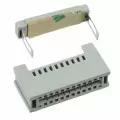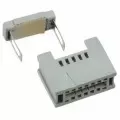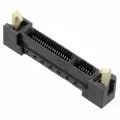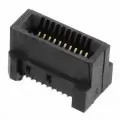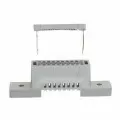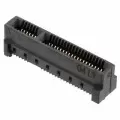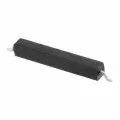OUTLINE:
What You Need to Learn about Pressure Switch Symbol
 398
398Have you ever looked at a pressure switch symbol and felt like it's speaking a language you don't understand? Do you find yourself puzzled by the intricate designs, wondering what they signify and how they impact your machinery?

Image Source: Learning Instrumentation and Control Engineering
Fear not, because in "Cracking the Code: Demystifying Pressure Switch Symbols," we're about to shed light on these enigmatic symbols.
Get ready to embark on a journey of discovery as we unravel the mysteries behind pressure switch symbols and empower you with the knowledge you need to navigate the world of industrial automation with confidence.
What Do the Symbols Mean on A Pressure Switch
The term "pressure switch symbol" typically refers to graphical representations used to convey information about pressure switches in engineering diagrams, schematics, or technical documentation.
These symbols are standardized across industries and serve as visual cues to understand various aspects of pressure switches, such as their function, operating parameters, and connections.
Pressure switch symbols may include icons representing pressure levels, switching states (e.g., ON/OFF), adjustment mechanisms, electrical connections, environmental conditions, and flow direction.
These symbols help engineers, technicians, and other stakeholders interpret diagrams and understand how pressure switches integrate into larger systems or circuits.
For example, a pressure switch symbol might depict a stylized gauge indicating pressure thresholds for activation or deactivation, or it might include arrows showing the direction of fluid flow.
Understanding these symbols is crucial for effectively designing, installing, and troubleshooting systems that incorporate pressure switches.
Common Symbols on A Pressure Switch
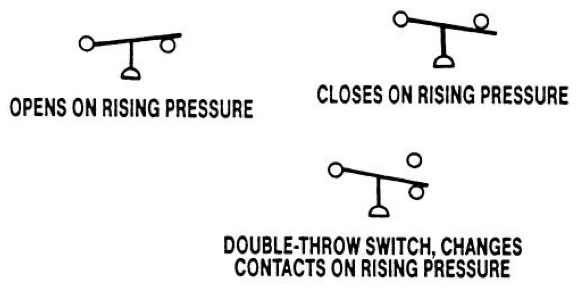
Image Source:Master Samurai Tech
Common symbols found on pressure switches include:
Pressure Level Indicator: Often represented by a stylized gauge or vertical lines, indicating the pressure thresholds at which the switch activates or deactivates.
Switching States: Symbols like circles or squares with arrows, denoting the switch's ON (activated) or OFF (deactivated) states, illustrating whether the switch opens or closes its contacts at a certain pressure level.
Pressure Connections: Arrows pointing towards or away from a geometric shape (such as a circle or rectangle), representing pressure connections, indicating where the pressure is applied or measured.
Adjustment Mechanisms: Symbols resembling dials, knobs, or arrows with plus and minus signs, signifying adjustment mechanisms for altering pressure settings manually.
Electrical Connections: Depictions of wires, terminals, or electrical contacts, indicating where electrical connections should be made to integrate the pressure switch into a circuit.
Environmental Conditions: Symbols like triangles or clouds, indicating environmental factors such as temperature or humidity requirements for proper operation.
Flow Direction: Arrows within a pipe or channel, showing the direction of fluid flow, providing crucial information for correct installation and operation.
How to Identify Pressure Switch Symbols
Identifying pressure switch symbols involves familiarizing yourself with common graphical representations used in engineering diagrams, schematics, or technical documentation. Here's how you can do it:
Review Documentation: Start by consulting the manufacturer's documentation or technical specifications for the pressure switch you are working with. The documentation typically includes a legend or key that explains the symbols used in diagrams.
Research Standard Symbols: Familiarize yourself with standard symbols used in engineering drawings and diagrams. There are several resources available, such as engineering standards organizations or textbooks, that provide guidance on interpreting symbols commonly used in pressure switches and other industrial components.
Visual Inspection: Examine the pressure switch itself. Some pressure switches may have symbols or markings directly printed or etched onto the device, indicating key features or operating parameters. However, this may not always be the case, especially for smaller or more basic switches.
Compare Symbols: Compare symbols in diagrams or schematics with known standards or reference materials. Look for patterns or similarities between symbols to help deduce their meanings. Pay attention to context, such as the placement of symbols relative to other components or annotations in the diagram.
Seek Expertise: If you encounter unfamiliar symbols or have difficulty interpreting them, don't hesitate to seek assistance from colleagues, mentors, or experts in the field. They may be able to provide valuable insights or guidance based on their experience.
Practice and Learn: As with any technical skill, practice makes perfect. Take the time to study and familiarize yourself with pressure switch symbols through hands-on experience and exposure to various diagrams and schematics.
What Is the Pressure Switch Symbol Used for

The pressure switch symbol is used to represent pressure switches in engineering diagrams, schematics, and technical documentation.
Its primary purpose is to visually convey information about the pressure switch's function, operating parameters, and connections within a larger system.
Here are some specific uses of the pressure switch symbol:
Representation in Diagrams: In engineering drawings and schematics, the pressure switch symbol is used to depict the presence of a pressure switch within a system. It allows designers, technicians, and engineers to easily identify and understand where pressure switches are installed and how they are integrated into the overall system architecture.
Communication of Functionality: The symbol communicates key aspects of the pressure switch's functionality, such as its ability to detect changes in pressure and activate or deactivate electrical circuits based on preset thresholds. This helps stakeholders understand the role of pressure switches in controlling processes or equipment.
Indication of Operating Parameters: Pressure switch symbols may include graphical elements that represent specific operating parameters, such as pressure thresholds for activation or deactivation. This information helps users understand the pressure ranges at which the switch operates and can be adjusted.
Integration into Control Systems: By including pressure switch symbols in control system diagrams, designers can illustrate how pressure switches interact with other components, such as pumps, valves, or alarms. This facilitates the design, installation, and troubleshooting of control systems in industrial applications.
Standardization and Consistency: Standardized pressure switch symbols ensure consistency in communication across different engineering disciplines and industries. Engineers and technicians familiar with these symbols can quickly understand and interpret diagrams, regardless of their origin or source.
The End
Understanding pressure switch symbols is not just a skill—it's a gateway to unlocking the potential of engineering design and innovation.
By delving into the intricacies of these symbols, you've taken a crucial step towards mastery in the realm of industrial automation.
Now equipped with this knowledge, go forth and apply it with confidence, knowing that you possess the key to navigating the complexities of pressure switch systems with ease and efficiency.

Disclaimer: The views and opinions expressed by individual authors or forum participants on this website do not represent the views and opinions of Chipsmall, nor do they represent Chipsmall's official policy.

share this blog to:


